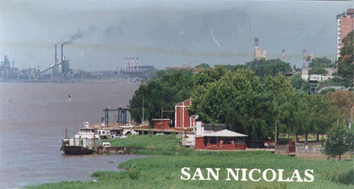Fractionation of eleven elements by chemical bonding from airborne particulate matter collected in an industrial city in Argentina
Abstract
A four-step chemical sequential extraction procedure was used to evaluate the distribution of Al, As, Cr, Cu, Fe, Mn, Ni, Pb, Ti, V and Zn in airborne particulate matter collected on glass fibre filters using a high-volume sampler. Two sets of samples were collected in 2001 (winter and summer campaigns) in representative zones of an industrial city of Argentina. The leaching scheme was applied to PM-10 particles and consisted in extracting the elements in four fractions, namely soluble and exchangeable elements; carbonates, oxides and reducible elements; bound to organic matter and sulfidic metals; and residual elements. Metals and metalloids at μg g−1 level were determined in each fraction by inductively coupled plasma optical emission spectrometry (ICP OES). Analyte concentration varied from 14 μg g−1 (equivalent to 1.0 ng m−3) for As to 11.8 mg g−1 (equivalent to 2089 ng m−3) for Al. Seven elements, namely Al, Cr, Fe, Mn, Pb, Ti and Zn showed similar distributions in both seasons while As was distributed in a significantly different manner in each season. The results exhibited low As contents in the first and second fractions that could be associated with routine coal combustion and a high content in the third and fourth fractions of the summer samples that could be linked to the use of pesticides. Aluminium, As, Cu, Mn, Ni, Ti, V and Zn were found in different percentages in the more bioavailable aqueous fraction with As, Mn, V and Zn exhibiting solubilities greater than 1% while Cr and Pb being insoluble. The content of Al, Cr, Cu, Fe, Ni, Pb, and Zn in the residual fraction was, in average, higher than 50%. A comparative assessment of the use of the underlying information available from fractionation studies compared to that obtained from total element content was done for Fe and Mn. It showed that the results obtained using chemical sequential extraction procedures allowed further discrimination of the potential air pollution sources.


 Please wait while we load your content...
Please wait while we load your content...